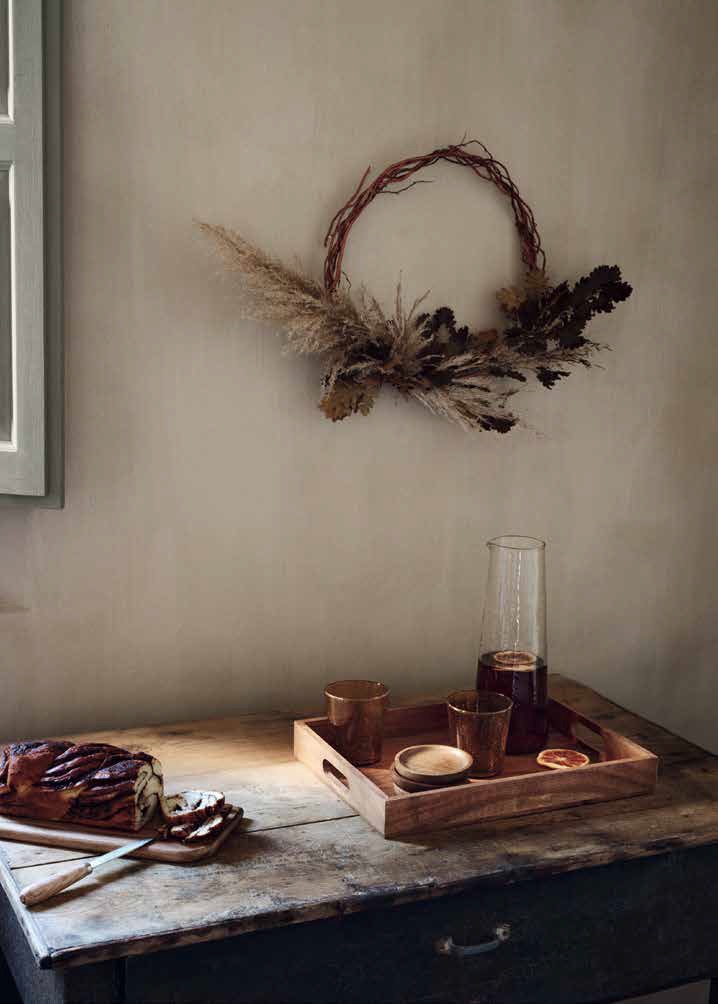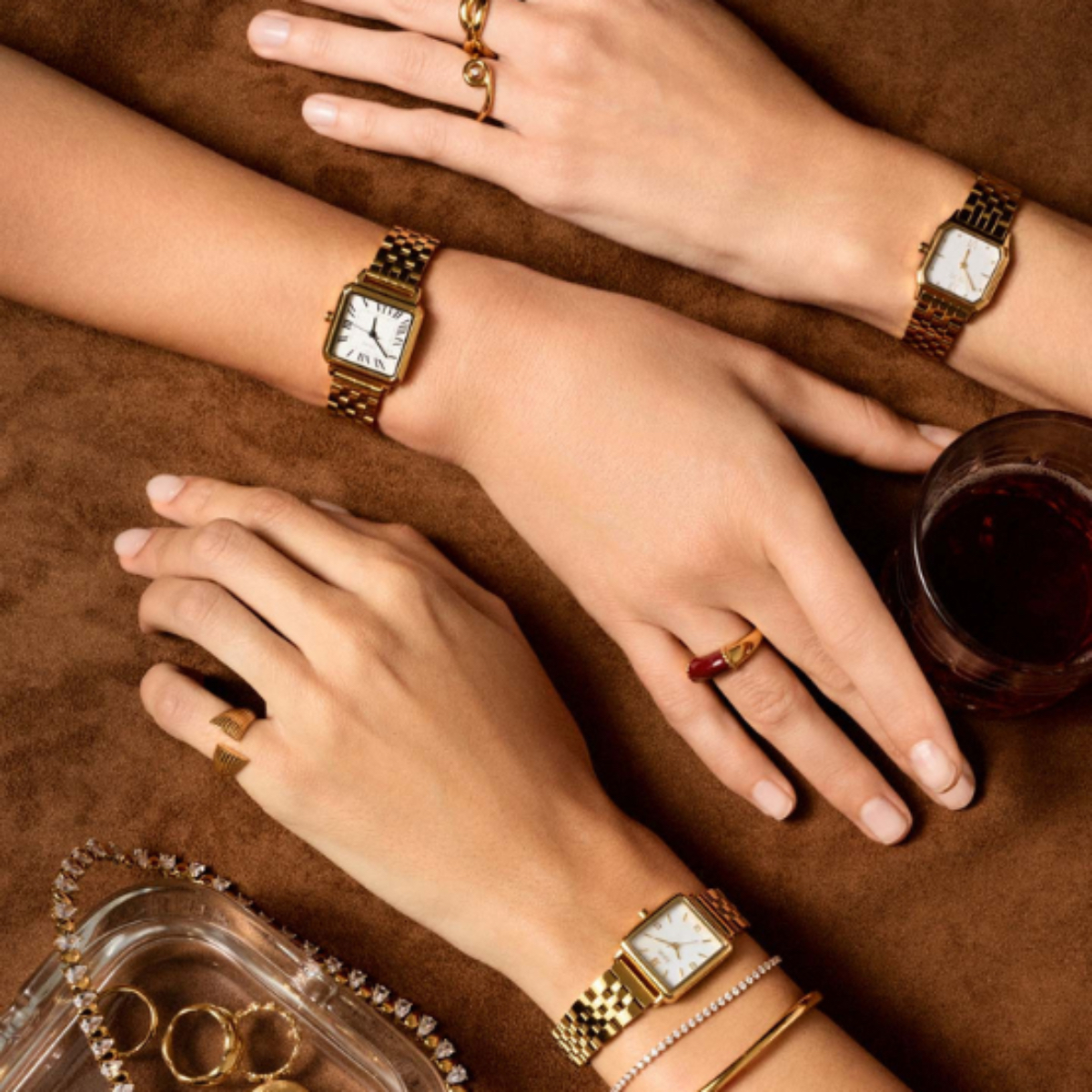And whilst it’s cold outside, pour the hot chocolate with a good dollop of foam sprinkled with cocoa powder. This would be… Expectations for a perfect winter weekend, yes. But it's also hygge.
And whilst it’s cold outside, pour the hot chocolate with a good dollop of foam sprinkled with cocoa powder. As we cuddle up on a plush wool blanket on a comfy sofa. In front of the fireplace. In a room lit only by candles and the aroma of freshly baked cinnamon cookies. With a good book. This would be… Expectations for a perfect winter weekend, yes. But it's also hygge.

It’s pronounced "hu-gga". And clarifying the pronunciation of this Scandinavian concept innate to the Danish lifestyle is, surprisingly, easier than translating it into other languages. It could be said that it means “cozy”, but that would be the same as reducing the translation of saudade to something like “miss you”. Hygge is more than a word or phrase to explain it; it is, one might say, as sensitive as the pinnacle of comfort zone from person to person. It's just that hygge can't be explained, it's felt. And the best way to describe it is to paint a mental picture that evokes that feeling of comfort, that warmth in your gut that emulates a perfect, indulgent, cozy moment.
The word isn’t new, nor was it when it became popular in 2016, 2017 - at the time, it even entered the top list of words of the year by Oxford Dictionaries, in Great Britain -, driven by the media coverage of a series of books released at the time, including Meik Viking's The Little Book of Hygge. Its author, President of The Happiness Research Institute in Denmark, wanted to explain why the Danish people are considered the happiest in the world, implying this concept as a key part of the happiness formula (if it exists), which resulted in, along with many other authors who theorized about hygge in all aspects, from decoration to gastronomy, the globe identifying cozy situations with this versatile and widely used word in the dialogues of both the Danish and Norwegian people. In both languages, the term refers to a form of everyday union, "a pleasant and highly valued experience of security, equality, personal fullness and a spontaneous social current", described Jeppe Trolle Linnet, in 2010, in the essay Interweavings – The cultural phenomenology of everyday consumption and social atmosphere within Danish middle-class families; but much earlier, this gratitude for life and apology for living in the moment in a complete way impressed across borders: in 1957, the writer Robert Shaplen, stated, in the article Letter from Copenhagen, from The New Yorker, that hygge was ubiquitous in that city, with “sidewalks full of smiling hyggelig [the attribute of being hygge, in Danish] people, who continually lift their hats greeting familiar passers-by and look at strangers with an expression as if they wanted to know them well enough to take their hats off to them too”, underlining this way of being continuously kind resulting from an innate happiness. It is true that the Danes have several variables that allow them an advantage in the field of being happy - free education, universal healthcare, paid leave, one month of annual vacation, etc -, which helps to argue that it's easier to be hygge once these kinds of basic needs are met, but the best thing about hygge is that the concept is possible regardless. Why? Because it is based on the idea that the best in life is found in the simple things, making the most of mundane but special pleasures. If it were a philosophy, one could interpret hygge as a kind of healthy hedonism, placing pleasure as the ultimate goal, but in a simplistic, attainable, controlled way, in an epicurean way of living everyday life and the moments in a fuller, grateful, present manner.
Although it can be put into practice all year round - just think of the taste of an extra fresh lemonade on a hot summer afternoon -, the concept is usually associated with winter, perhaps because it is at this time (which lingers for longer in Scandinavian countries) that it is more necessary to focus on these small pleasures that are feasible and easy to practice in the midst of bad weather and the rigorous demands of the cold season. What is hygge then? Hygge is the five senses sharpened and tuned in with a paraphernalia of favorite items. It's the array of scented candles that flood the house on an already dark late autumn afternoon, the smell of freshly baked bread, the scent of roasted chestnuts on a street corner on a cold night, the scorched odor of firewood. It manifests itself in the crackle of a newly lit fireplace, in the sound imperfections of a vinyl playing Christmas classics on an old record player, in the laughter of an evening washed down with mulled wine and friends. It's the taste of hot chocolate, of a freshly baked cinnamon roll that touches your tongue while it's still warm, it's the taste of comfort food that floods your senses even before reaching your plate, it's that cup of coffee, whose aroma hangs in the air, just because it’s just brewed. It is the repeated touch of flipping through the pages of a good book, newspaper or magazine, the softness of a pair of cashmere socks, the warmth of a hug, it’s surrounding yourself with objects that are as natural as possible, in organic materials such as wood, stone, preferring handcrafts such as ceramics. It's watching the snow fall or hearing the rain hit the window while curling up in a warm blanket. It's adding honey to a lemon tea, sugary topping to a cake, or any other layer of extra comfort to any situation that, in itself, is a snuggle. It is, above all, allowing yourself to experience these pleasures and fully appreciate them, without tormenting or blaming yourself because you should or could have been productive in any other way. Hygge, perhaps, simply put, is having time for yourself, either alone or with others. Hygge, perhaps, in a simple way, is to account for free time in the best way. Hygge, perhaps, simply put, is not wasting the present.
Hygge, perhaps, we hope, is this particular moment when you have this article on your hands, accompanied by a glass of mulled wine flavored with cinnamon and cardamom or a cup of tea with lavender sugar or a mug of hot chocolate with whipped cream or a cup of freshly brewed coffee, on one side, and a toast with herb butter or a warm pastel de nata sprinkled with cinnamon or a carrot cake with chocolate frosting, on the other, inside a cafe with warm lighting and decked in wood, in a cozy atmosphere, reading, five or six years after the word that made shortlists, about this Danish life motto. And why are we recovering this concept in this Velvet Issue, years after hygge crashed languages around the world? Because this issue is, in itself, in its content and in its ultimate purpose (that is, savoring it page by page), hygge. Perhaps, just perhaps, the best word to describe hygge is velvet.
Translated from the original on "The Velvet Touch" issue of Vogue Portugal, published december 2022.Full stories and credits on the print issue.
Most popular
.jpg)

Relacionados

O que lhe reservam os astros para a semana de 30 de dezembro a 5 de janeiro
30 Dec 2025
.jpg)



.jpg)
